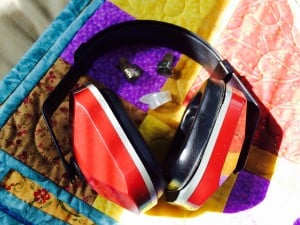Learning new songs is always a great way to improve your musical knowledge. A better understanding of harmony, melody, song structure, and much more can be utilized by playing through a tune. However, can studying a tune reveal certain personal characteristics of your playing and the emotions that are attached to it? Absolutely, especially if you are rediscovering a song you enjoyed from a pivotal moment in your life: your late adolescence to early adulthood.
Research in psychology and neuroscience indicate a definite connection between music and memories. But did you know that it also indicates that the music we listen to in our late adolescence and early adulthood holds a stronger power over our emotions than music at other points in our lives? This “nostalgia” may seem like common sense, but what’s interesting is that this emotional connection to the music of these years does not weaken as we age.
It seems that reminiscing about music from these years can bring up autobiographical memories, and reveal a personal emotional power to this music. So as a musician, I can’t help but ask: what does this mean for my instrument and I now?

I recently started re-listening to many tunes from my late teens and early 20’s, and I undoubtedly feel a deep emotional connection to this music. Memories come flooding back, with occasional goosebumps popping up for notes and sounds that really hit home, or touch my soul. I can’t help but begin singing along to many of these songs, realizing that since I’ve listened to them so many times in my life, I can sing the melody almost perfectly without having to consult sheet music or really listen and study the tune. Basically, I’m realizing that I’ve had many of these songs aurally memorized; they have left a deep imprint on my brain and unconscious. Even though I had never studied these songs musically (I didn’t know the chord changes, the key, the notes of the melody, etc.), I know them in and out – in my mind and heart. What a great tool and aid when practicing my instrument!
Normally, learning a new song requires one to listen to it, examine it, and study it multiple times until it is memorized…this requires practice and time, like learning anything new. However, half the battle has already been won for these tunes from our personal past, as our ears and brain know them deeply. In lieu of this, I decided to start learning some of these songs on my pedal steel, seeing what would come out of it.
I was quickly amazed at how much easier it was to learn a song that I had listened to many times during these years in my life. The melodies are easier to sing and find on the steel, and the chord changes seem harmoniously entwined to my fingers and mind. The rhythms were already close to my heart, as they had been beating on in my body for years just like my heart. The greatest aspect of learning these tunes that I love and cherish: emotions come pouring into the notes and sounds I make on the steel – more easily than ever.
So not only was it increasing my knowledge and understanding of harmony, melodic elements, and rhythmic qualities, I didn’t have to pull up my audio player and listen to the song multiple times like I sometimes do when learning a tune I’ve never heard before. One or two times of listening was plenty… the music was all in my head, memorized by my past self, and full of emotion! Best of all, it was fun learning songs from my past and rediscovering why I loved them then, and still do now (most of them anyways!).
How This Helps From a Practicing Standpoint…
So I’ve begun revisiting and learning songs from my late teens to early 20’s, and I’m finding that they’re really improving my steel playing. Singing the melodies that are ingrained in my mind, and finding these notes on the pedal steel, has been a great way to transcribe and improve the ears. These melodies are easier to translate from my mind to my fingers than many others.
Finding the chords and harmony that underlay these melodies almost seems second nature thanks to the amazing human brain, and I now have a deeper understanding of harmony on a theoretical level and emotional one too. Oh, that’s why that part of the song sounds so cool — they are using changes that really flow well together — no wonder why I always liked this song! I can now use this harmony knowledge for writing and composing my own tunes!
And the rhythmic aspects, the pulse, the beat — these came flowing out onto the steel — no metronome required. They were all in my head and memories. I am quickly able to groove on these tunes, knowing how the rhythm flows, feels, and relates to the music and its other elements.
For example, I recently listened to Led Zeppelin’s song “Your Time is Gonna Come”, one that I hadn’t heard since literally being in high school. I was amazed at how much I knew about this song without really knowing it, and after not hearing it for so long. You see back then, I had listened to it many times, and soaked it up with my heart and mind.
I could instantly sing the melody, I could hear Jimmy Page’s guitar parts crystal clear, and I was even surprised to hear a lot of pedal steel on the track — I didn’t even know what a pedal steel was back then! And what a cool organ intro!!

I then went to the steel’s C6 neck and translated Page’s acoustic guitar part to it. After a few short practice sessions, I could play his rhythm parts on pedal steel – sweet! Best of all, I could get away with singing some of Robert Plant’s vocals while playing the rhythm on pedal steel. And Page’s pedal steel playing – I could hear and identify those parts on the E9 neck just from listening.
On a basic level, I learned the melody of the song, the chord changes, and supplemental parts quicker than ever, and now I could jam some Zeppelin with other musicians if I wanted to! Heck, I could even play Page’s guitar part so that an electric guitar player could branch out and try some new stuff — maybe they could play the pedal steel parts on the song, which would make this a complete instrument role reversal. I love how versatile the pedal steel guitar is.
So next time you’re firing up a tune before practicing, consider revisiting some of those sentimental ones from years past, and you’ll be amazed at not only how much easier these songs are to learn, but also the emotional qualities you’ll be able to pull out of them. Your pedal steel playing will be that much more soulful, and your heart and mind will thank you too. What a great way to rediscover your past, and make something with it now!
Check out some of my recordings to hear my musical influences on pedal steel…
